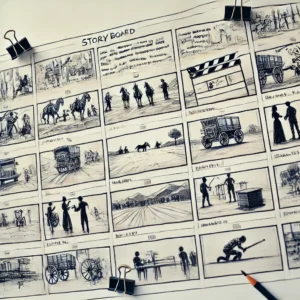Role of a VFX Shoot Supervisor Across Preproduction, Shooting, and Post-Production
A VFX shoot supervisor ensures that visual effects integrate seamlessly into the production by managing both creative and technical aspects. Their involvement during preproduction, shooting, and post-production is critical for achieving a visually cohesive and polished final product.
1. Preproduction: Building the Foundation for Flawless VFX

During preproduction, the VFX shoot supervisor carefully plans every detail to ensure smooth execution later.
First, they analyze the script to identify scenes that require visual effects, such as CGI, green screens, or motion capture.
Next, they evaluate potential filming locations, ensuring the space can accommodate VFX setups like green screens or lidar scanning.
Then, they collaborate with the director and VFX team on previsualization (previs) to create detailed blueprints for complex scenes.
Finally, they determine the required technical setups, such as cameras, tracking markers, and lighting configurations, to align with post-production needs.
2. Shooting: Executing with Precision for VFX Integration

When production begins, the VFX shoot supervisor ensures every element is captured correctly to support post-production.
To begin with, they supervise all VFX shots, ensuring proper framing, lighting, and setup for seamless compositing later.
Additionally, they use lidar scanning to create detailed 3D models of the sets, which are essential for CGI or virtual environment creation.
Moreover, photogrammetry techniques allow them to capture precise 3D models of objects and environments for realistic digital replication.
At the same time, they collect HDRI (high dynamic range imaging) data on set to replicate the lighting conditions in VFX shots.
Furthermore, they ensure chroma key setups, like green or blue screens, are properly lit, wrinkle-free, and positioned correctly to avoid issues during compositing.
Finally, they record essential tracking data, including camera movement, lens details, and lighting setups, to assist VFX artists in post-production.
3. Post-Production: Bringing the Vision to Life

After shooting, the VFX supervisor plays a key role in ensuring the integration of visual effects is seamless and realistic.
First, they provide all captured data, including lidar scans, photogrammetry files, HDRI captures, and tracking information, to the VFX team.
Next, they actively review VFX shots during the post-production process, offering feedback to maintain consistency and align with the director’s vision.
Then, they verify that CGI elements blend naturally with live-action footage, ensuring continuity in lighting, scale, and texture.
Finally, they approve the completed visual effects, ensuring the final output meets the creative and technical goals of the project.
Conclusion
By leveraging tools such as lidar scanning, photogrammetry, and HDRI, a VFX shoot supervisor ensures that every detail is captured accurately for seamless visual effects integration. Through careful planning in preproduction, precision during shooting, and collaboration in post-production, they play a pivotal role in creating visually stunning and immersive cinematic experiences.

